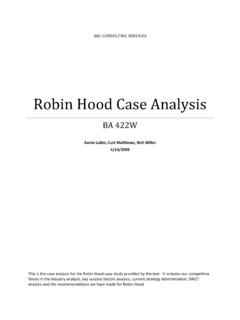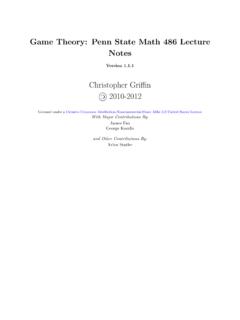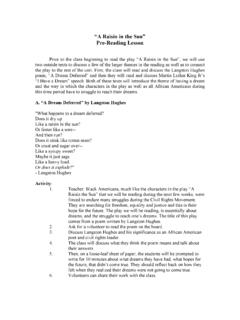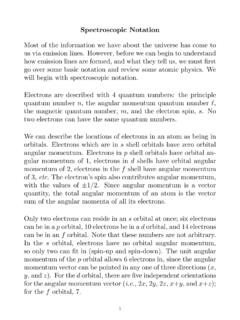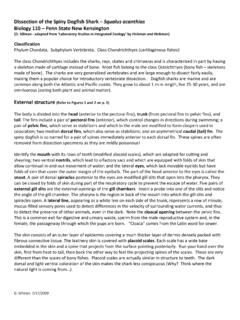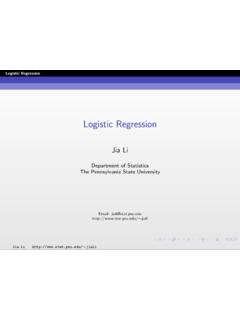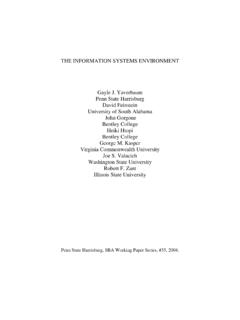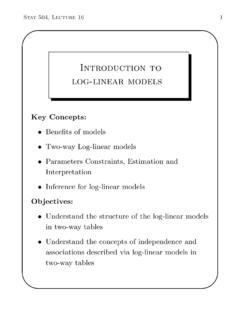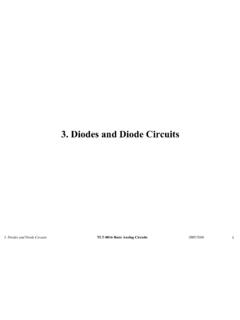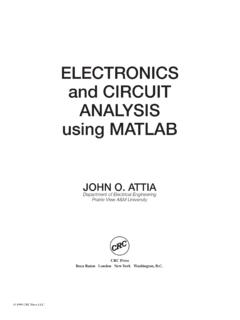Transcription of ELECTRIC POWER SYSTEMS
1 ELECTRIC POWERSYSTEMSELECTRIC POWERSYSTEMSA CONCEPTUAL INTRODUCTIONA lexandra von MeierA JOHN WILEY & SONS, INC., PUBLICATIONC opyright#2006 by John Wiley & Sons, Inc. All rights reservedPublished by John Wiley & Sons, Inc., Hoboken, New JerseyPublished simultaneously in CanadaNo part of this publication may be reproduced, stored in a retrieval system, or transmitted in any formor by any means, electronic, mechanical, photocopying, recording, scanning, or otherwise, except aspermitted under Section 107 or 108 of the 1976 United States Copyright Act, without either the priorwritten permission of the Publisher, or authorization through payment of the appropriate per-copy feeto the Copyright Clearance Center, Inc., 222 Rosewood Drive, Danvers, MA 01923, (978) 750-8400,fax (978) 750-4470, or on the Web at Requests to the Publisher for permissionshould be addressed to the Permissions Department, John Wiley & Sons, Inc.
2 , 111 River Street, Hoboken,NJ 07030, (201) 748-6011, fax (201) 748-6008, or online at of Liability/Disclaimer of Warranty: While the publisher and author have used their best effortsin preparing this book, they make no representations or warranties with respect to the accuracy or com-pleteness of the contents of this book and specifically disclaim any implied warranties of merchantabilityor fitness for a particular purpose. No warranty may be created or extended by sales representatives orwritten sales materials. The advice and strategies contained herein may not be suitable for your should consult with a professional where appropriate. Neither the publisher nor author shall be liablefor any loss of profit or any other commercial damages, including but not limited to special, incidental,consequential, or other general information on our other products and services or for technical support, please contact ourCustomer Care Department within the United States at (800) 762-2974, outside the United States at(317) 572-3993 or fax (317) also publishes its books in a variety of electronic formats.
3 Some content that appears in print maynot be available in electronic formats. For more information about Wiley products, visit our Web site of Congress Cataloging-in-Publication Data:Meier, Alexandra POWER SYSTEMS : a conceptual introduction/by Alexandra von cm. A Wiley-Interscience publication. Includes bibliographical references and : 978-0-471-17859-0 ISBN-10: 0-471-17859-41. ELECTRIC POWER SYSTEMS . I. dc222005056773 Printed in the United States of America10987654321To my late grandfatherKarl Wilhelm Claubergwho introduced me toThe Joy of Explaining Things&CONTENTSP refacexiii1. The Physics of Potential or s Static ELECTRIC Voltage ELECTRIC Calculating Resistive Transmission Voltage and Resistive and Magnetic The Field as a ELECTRIC Magnetic Electromagnetic Electromagnetic Fields and Health Electromagnetic Radiation262.
4 Basic circuit and Parallel Resistance in Resistance in Network Practical s Kirchhoff s Voltage Kirchhoff s Current Application to Simple The Superposition Circuits443. AC Current and Historical Mathematical The rms Definition of ELECTRIC Complex The Significance of Reactive Phasors as Phasors as Operations with Phasors804. Simple Synchronous Basic Components and Other Design Control of Synchronous Single Generator: Real Single Generator: Reactive Multiple Generators: Real Multiple Generators: Reactive Induction General Electromagnetic from the System Coincident and Noncoincident Load Profiles and Load Duration and Multiphase Connections1406.
5 Transmission and Historical Structural Sample Loop Stations and Reconfiguring the Rationale for Three Balancing Delta and Wye Per-Phase Three-Phase General Transformer Delta and Wye of POWER Towers, Insulators, and Other Thermal Stability basics of Protection and Protective Protection Coordination1927. POWER Flow POWER Flow Network Choice of Types of Variables for Balancing Real Variables for Balancing Reactive The Slack Summary of with Interpretation of Six-Bus Tweaking the Conceptualizing POWER Flow Equations and Solution Derivation of POWER Flow Solution Decoupled POWER and Optimal POWER Flow2268. System Measures of Valuation of The Concept of Steady-State Dynamic Voltage Waveform255xCONTENTS9.
6 System Operation, Management, and New and Control on Different Time The Scale of a The Scale of Real-Time The Scale of The Planning Distributed Operators and Cognitive Representations of POWER Operational Implications for Technological for Restructuring292 Appendix: Symbols, Units, Abbreviations, and Acronyms298 Index302 CONTENTSxi&PREFACEThis book is intended to bridge the gap between formal engineering texts and morepopularly accessible descriptions of ELECTRIC POWER technology. I discovered thisgap as a graduate student struggling to understand POWER SYSTEMS especially trans-mission and distribution SYSTEMS which had always fascinated me but which nowinvited serious study in the context of research on implementing solar I had studied physics as an undergraduate, I found the subject of powersystems difficult and available literature seemed to fall into two categories: easy-to-read, qualitat-ive descriptions of the ELECTRIC grid for the layperson, on the one hand, and highlytechnical books and papers, on the other hand, written for professionals andelectrical engineering majors.
7 The second category had the information I needed,but was guarded by a layer of impenetrable phasor diagrams and other symbolismthat obviously required a special sort of was extremely fortunate to have access to some of the most highly respectedscholars in the field at the University of California, Berkeley, who were also gener-ous, patient, and gifted teachers. Thus I survived Leon Chua s formidable course oncircuit analysis , followed by two semesters of POWER engineering with Felix curriculum hardly made me an expert, but it did enable me to decipher thelanguage of the academic and professional literature and identify the issues relevantto my enjoyed another marvelous learning opportunity through a research projectbeginning in 1989 at several large nuclear and fossil-fueled steam generationplants, where our team interviewed the staff as part of a study of High-ReliabilityOrganizations.
8 My own subsequent research on POWER distribution took me into thefield with five utilities and one in Germany. Aside from the many intriguingthings we learned about the operating culture in these settings, I discovered howclearly the POWER plant staff could often explain technical concepts about theirworking SYSTEMS . Their language was characteristically plain and direct, and wasalways guided by practical considerations, such as what this dial tells you, orwhat happens when you push that hindsight, the defining moment for inspiring this book occurred in the Pittsburgcontrol room when I revealed my ignorance about reactive POWER (just after havingboasted about my physics degree, to the operators benign amusement). They gener-ously supplied me with a copy of the plant operating manual, which turned out tocontain the single most lucid and comprehensible explanation of ELECTRIC generators,xiiiincluding reactive POWER , I had seen.
9 That manual proved to me that it is possible towrite about ELECTRIC POWER SYSTEMS in a way that is accessible to audiences who havenot undergone the initiation rites of electrical engineering, but who neverthelesswant to get the real story. This experience suggested there might be other peoplemuch like myself outside the POWER industry, but vitally concerned with it who could benefit from such a practical finishing my dissertation in 1995, I decided to give it a try: My goal was towrite the book that I would have liked to read as a student six or seven years that it has taken almost a decade to achieve, this turned out to be a muchmore ambitious undertaking than I imagined at the outset. A guiding principlethroughout my writing process was to assume a minimum of prior knowledgeon the part of the readers while trying to relate as much as possible to their directexperience, thus building a conceptual and intuitive understanding from theground up.
10 I hope the book will serve as a useful reference, and perhaps even as asource of further inspiration for others to study the rich and complex subject ofelectric envision two main audiences for this book. The first consists of students andresearchers who are learning about ELECTRIC circuits and POWER system engineeringin an academic setting, and who feel that their understanding would be enhancedby a qualitative, conceptual emphasis to complement the quantitative methodsstressed in technical courses. This audience might include students of diverse back-grounds or differing levels of preparation, perhaps transferring into an engineeringprogram from other disciplines. Such students often need to solidify theirunderstanding of basic information presumed to be second nature for advancedundergraduates in technical fields.
